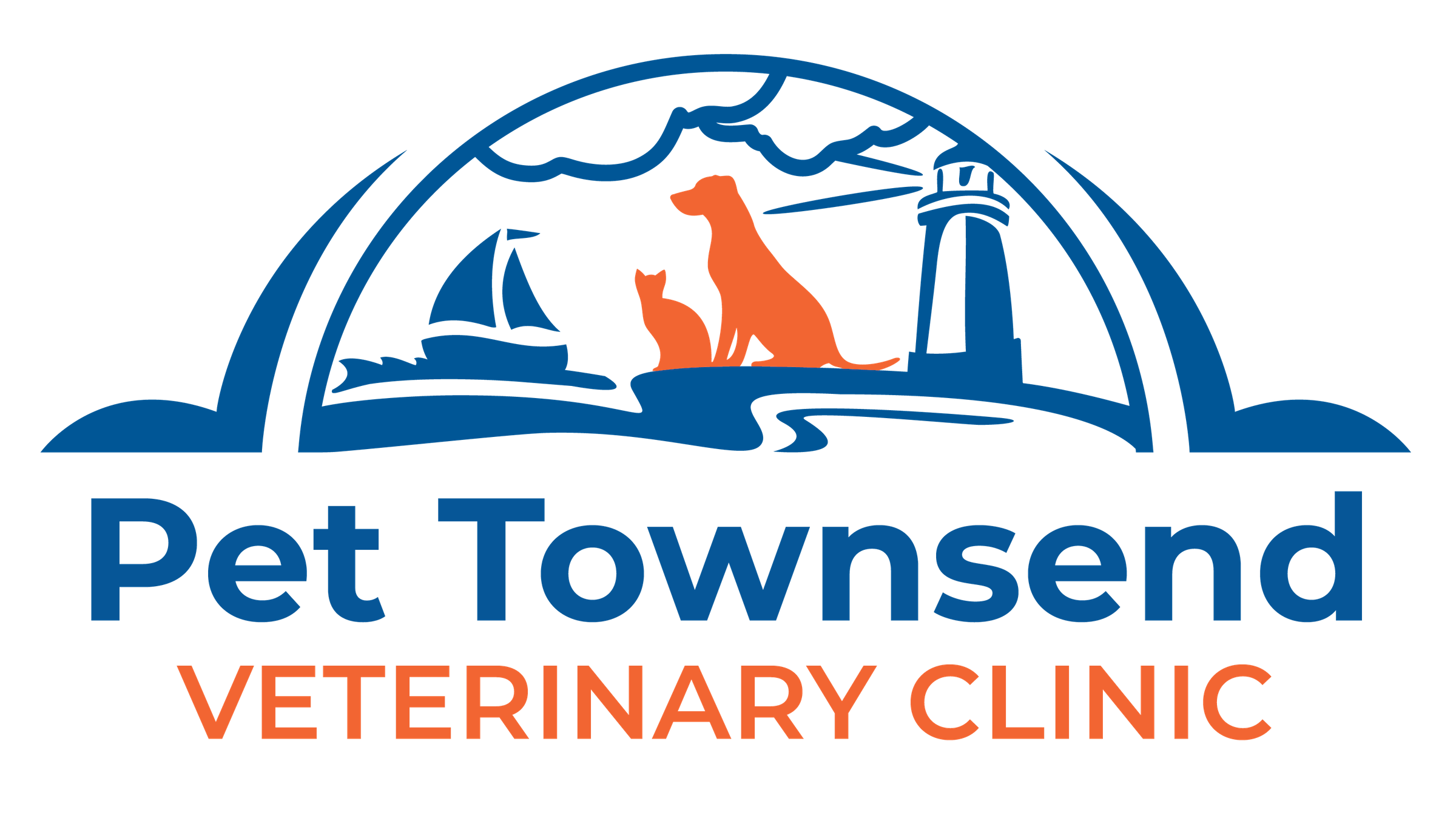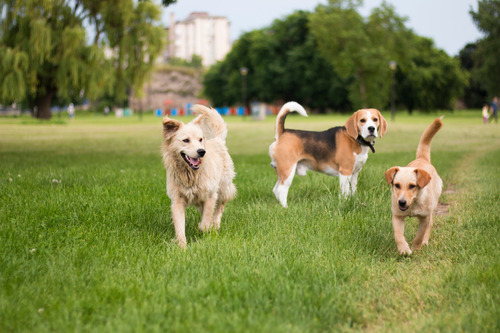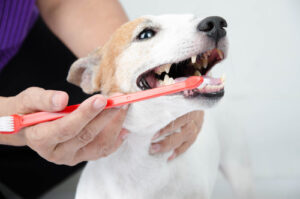Dog flu is more than just a seasonal bug—it’s a highly contagious respiratory illness that can spread quickly among dogs, particularly in environments with close contact like dog parks, boarding facilities, and kennels. For pet owners, understanding the signs of dog flu, how it spreads, and how to protect pets is essential to keeping them healthy and happy year-round. At Pet Townsend Veterinary Clinic, we’re here to provide the facts about dog flu and what you can do to minimize your pet’s risk. If you’re concerned about your dog’s health or want advice tailored to your pet’s needs, call us at (360) 379-1133 or book an appointment online!
What Is Dog Flu and How Does It Spread?
Dog flu, or canine influenza, is caused by influenza viruses H3N8 and H3N2, which are specific to dogs. Unlike human flu viruses, canine flu does not spread to people, but it can spread rapidly among dogs through respiratory droplets. When an infected dog sneezes, barks, or coughs, they release tiny particles that carry the virus, which nearby dogs can inhale. This transmission method makes it especially easy for the virus to circulate in crowded environments.
Year Round Risk of Infection
Canine influenza isn’t restricted to a specific season, so dogs can catch it at any time of year. While the flu is highly contagious, some infected dogs may show few or no symptoms, making it harder to contain. Whether your dog is frequently around other dogs or not, you should know the signs, the risks, and how to protect your pet.
Common Symptoms of Dog Flu
When a dog is infected with canine influenza, they may display symptoms similar to a human with the flu. Common signs of dog flu include:
- Persistent coughing (lasting up to three weeks)
- Runny nose or nasal discharge
- Fever, usually around 103°F to 104°F
- Lethargy and loss of energy
- Reduced appetite
- Sneezing and watery eyes
These symptoms can vary in severity, and some dogs may experience mild symptoms, while others may develop more severe complications, including pneumonia. If you notice these signs in your dog, especially after exposure to other dogs, it’s wise to seek a veterinarian’s guidance.
Is Your Dog at Higher Risk?
Factors like age, overall health, and exposure to other dogs can impact a pet’s likelihood of contracting the virus. Senior dogs, puppies, and dogs with pre-existing health conditions may be more susceptible to complications if they catch the flu. Dogs frequently exposed to other dogs—such as those who visit dog parks, daycare facilities, or boarding kennels—are at a higher risk of contracting dog flu. Regular exposure to environments with several dogs, especially if symptoms are present, can increase your dog’s chance of infection. Pet Townsend Veterinary Clinic can help evaluate your dog’s individual risk and suggest ways to minimize exposure.
Environments with High Contagion Risks
To reduce your pet’s chances of exposure, it’s helpful to know where the risk of dog flu transmission is highest. Limiting time in these areas when a flu outbreak is reported can be an effective way to protect your dog from unnecessary exposure. High risk environments include:
- Dog parks: High dog-to-dog interaction increases the chance of virus spread.
- Daycare centers: Close quarters and frequent barking can facilitate virus transmission.
- Kennels and boarding facilities: Dogs may spend prolonged periods in shared spaces.
- Grooming salons: Though typically less crowded, dogs come into close contact, especially during peak grooming seasons.
How Dog Flu Is Diagnosed: When to See a Veterinarian
If you suspect your dog has been exposed to canine influenza or is showing signs of illness, contact your veterinarian as soon as possible. Early intervention can prevent the spread to other pets and provide your dog with the appropriate care to minimize discomfort and prevent complications. Your veterinarian can diagnose dog flu through various tests, such as nasal swabs or blood tests. These tests are vital because other respiratory illnesses, including kennel cough, can produce similar symptoms. Proper diagnosis ensures that your dog receives the appropriate treatment for their condition.
What to Expect During the Diagnostic Process
When you bring your dog to the veterinarian with flu-like symptoms, here’s what you can typically expect during the examination:
- History of symptoms: Your vet will ask about the symptoms you’ve observed and when they began.
- Physical examination: The veterinarian will check your dog’s temperature, listen to their breathing, and assess overall condition.
- Testing options: Depending on your dog’s symptoms and exposure history, your vet may recommend a nasal swab or blood test to confirm the presence of the influenza virus.
After confirming a diagnosis, your veterinarian will discuss the best course of action to keep your dog comfortable and monitor for any progression of symptoms.
How Is Dog Flu Treated?
There is currently no cure for dog flu, but treatment focuses on supportive care to manage symptoms and improve your dog’s comfort. Treatment may vary depending on the severity of the symptoms, with milder cases often needing little more than rest and hydration.
For moderate to severe cases, your veterinarian may suggest additional supportive treatments to help reduce the risk of complications like pneumonia. These treatments could include medications to reduce fever, soothe the respiratory tract, or manage secondary bacterial infections. In some cases, hospitalization may be recommended to provide fluids and specialized care.
Remember, do not give your dog any over-the-counter medications meant for humans, as many of these can be harmful to pets. Consult with your veterinarian for appropriate treatments tailored to your dog’s specific needs.
Protecting Your Dog from Dog Flu
Prevention is key in managing dog flu. The best approach is to minimize your dog’s exposure to crowded places during an outbreak and maintain regular vet check-ups. The canine influenza vaccine is another option for high-risk dogs, particularly those frequently in contact with other dogs. The flu vaccine for dogs is not mandatory, but it can be helpful for pets with higher risk levels. Discuss your pet’s vaccination options with your veterinarian, as they can recommend whether the vaccine suits your dog’s needs and lifestyle.
Preventive Measures You Can Take
In addition to vaccination, here are a few ways to reduce your dog’s risk of contracting the flu:
- Wash your hands after petting other dogs, especially if they show symptoms.
- Keep your dog away from pets showing signs of respiratory illness.
- Wash your dog’s toys, bedding, and bowls regularly.
- Some local veterinary clinics, including Pet Townsend Veterinary Clinic, may provide updates on known outbreaks to help you manage your dog’s exposure.
Supporting Your Dog’s Health Post-Flu
If your dog has recovered from dog flu, supporting their overall health during recovery is necessary to ensure a full return to wellness. Rest and proper hydration are fundamental, as these allow the immune system to rebuild strength. Diet and nutrition play an essential role as well. A balanced diet can help replenish your dog’s energy levels, especially after a prolonged illness. Speak with your veterinarian about nutritional recommendations that can support a quicker recovery and promote long-term health.
Monitoring your dog for lingering symptoms or complications is also crucial during the recovery phase. If your dog’s cough persists or they seem unusually lethargic, scheduling a follow-up appointment with your vet can provide peace of mind and prevent further health issues.
The Best Ways to Safeguard Your Dog’s Health
Protecting your dog from dog flu requires a combination of vigilance, preventive measures, and regular veterinary care. Understanding the risks, recognizing the symptoms, and knowing when to seek medical attention can help ensure that your dog stays healthy and happy throughout the year. If you have concerns about dog flu or would like to discuss preventive options like vaccination, our team at Pet Townsend Veterinary Clinic is here to help. Call us at (360) 379-1133 or book an appointment online to take proactive steps in caring for your pet’s well-being.






